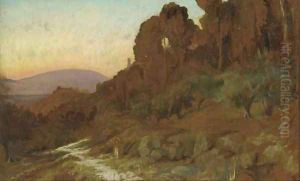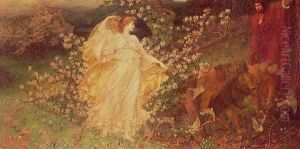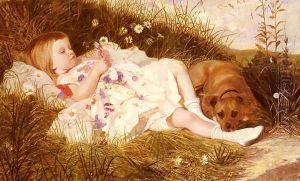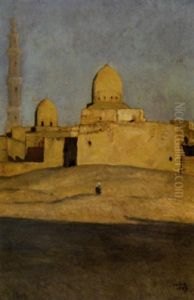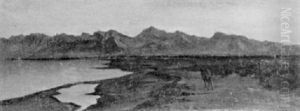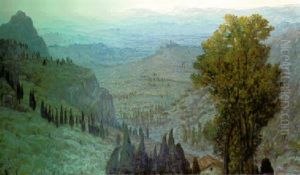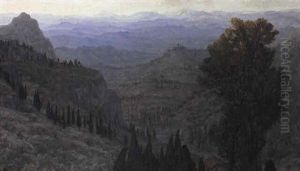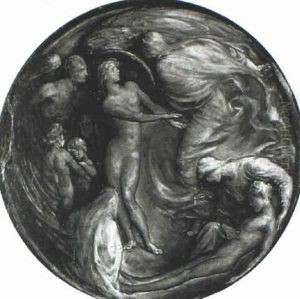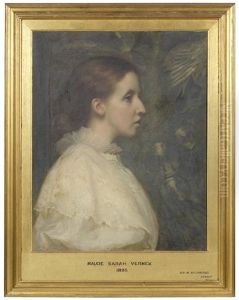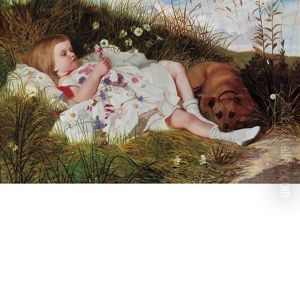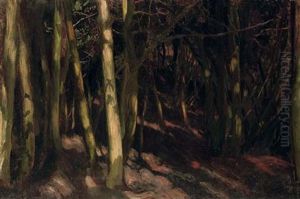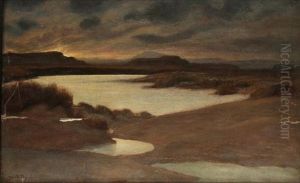Sir William Blake Richmond Paintings
Sir William Blake Richmond KCB RA was an influential British painter, sculptor, and designer, born on November 29, 1842, in London, England. He was the son of the portrait painter George Richmond and named after his father's friend, the visionary artist William Blake. Richmond's artistic talents were recognized early, and he began his formal education in art at the Royal Academy schools in London.
Richmond's work encompassed a variety of styles and subjects, including classical mythology, portraits, and decorative art. He was particularly renowned for his frescoes and mosaics, which often contained religious themes. Among his notable works are the mosaics in St. Paul's Cathedral in London. His style was influenced by the Pre-Raphaelite Brotherhood, a group of English painters, poets, and art critics founded in 1848.
Throughout his career, Richmond was an active member of the artistic community. He served as the Slade Professor of Fine Art at Oxford University between 1879 and 1883. Richmond was also involved in many artistic societies, including the Royal Academy of Arts, where he was elected as an associate in 1871 and became a full academician in 1888.
Richmond was not just an artist but also a social thinker, concerned with the effects of industrialization on society and the environment. He was a friend of the arts and crafts movement leader William Morris, sharing similar views on the importance of beauty in everyday life and the value of craftsmanship.
He was knighted in 1895 for his contributions to the art world, which was a significant recognition of his impact on Victorian art. Sir William Blake Richmond continued to work and exhibit his art until his death on February 11, 1921. His legacy is preserved in his works that are displayed in various galleries and institutions across the United Kingdom.






